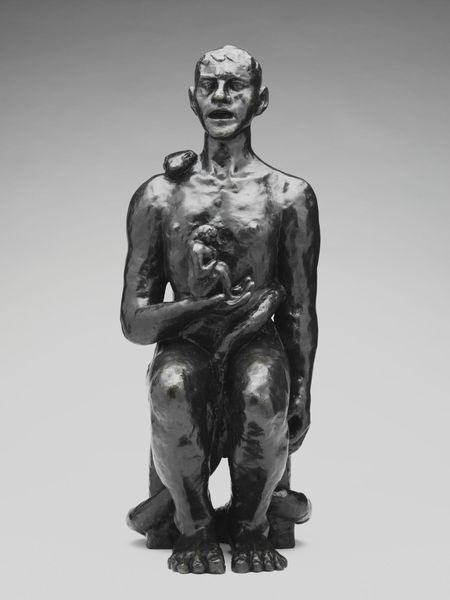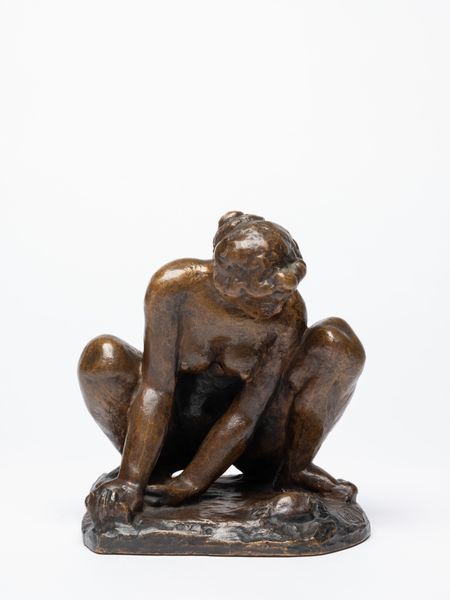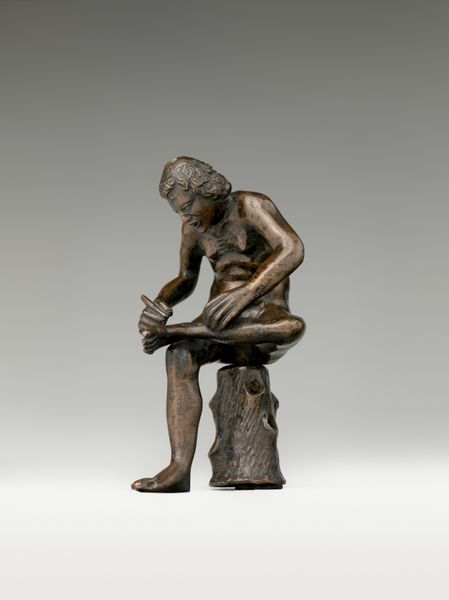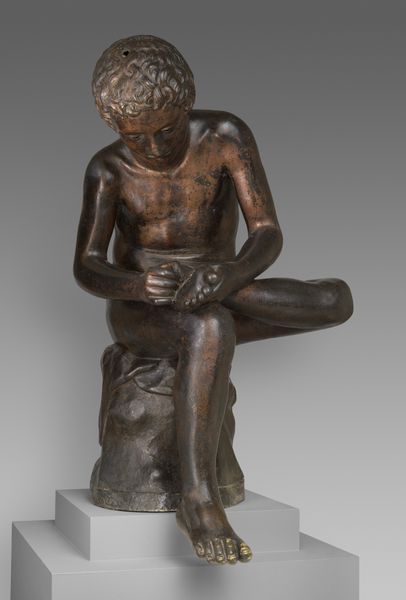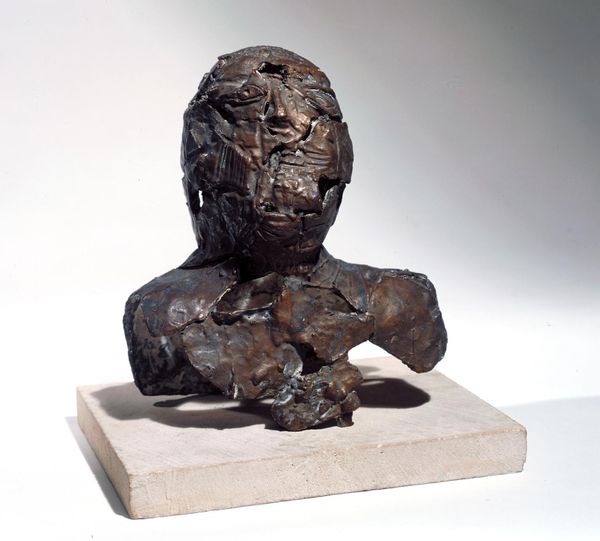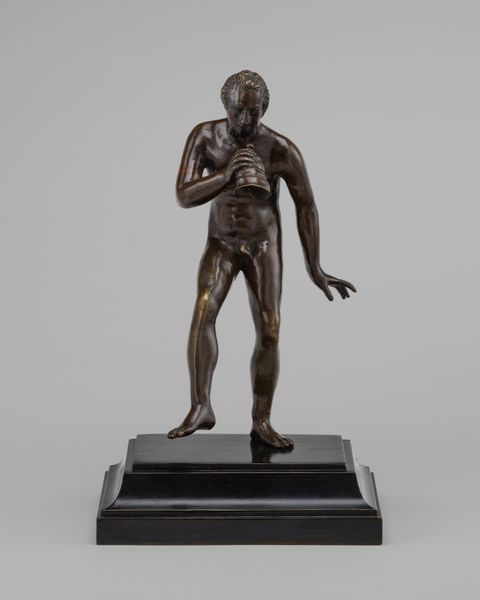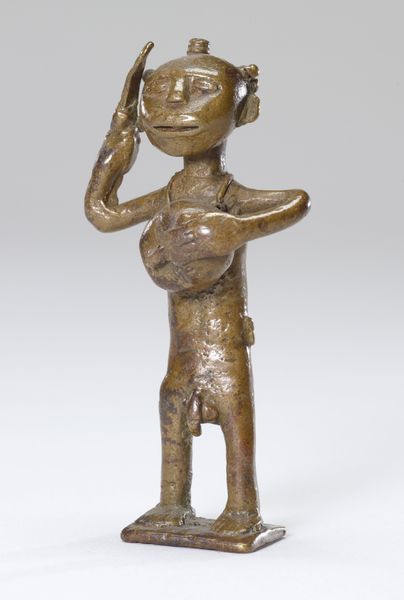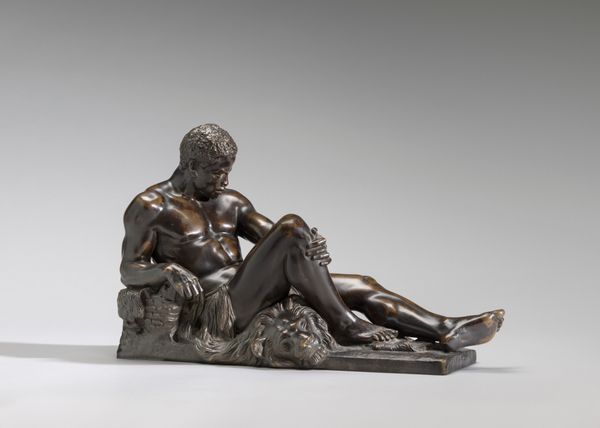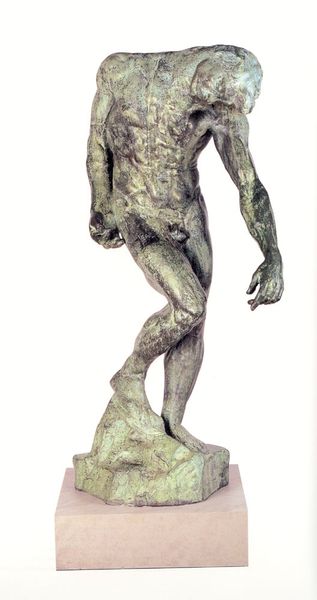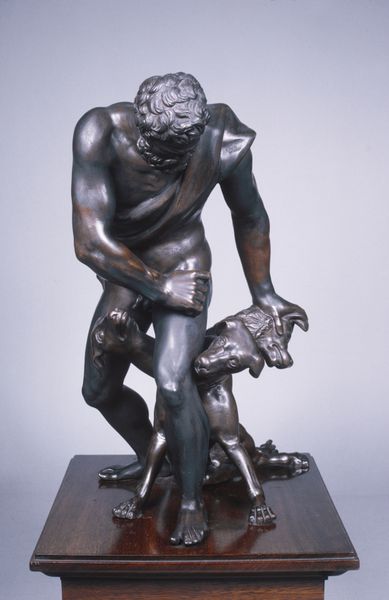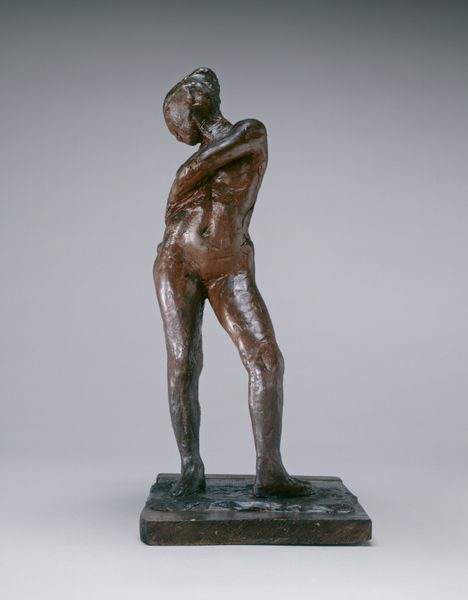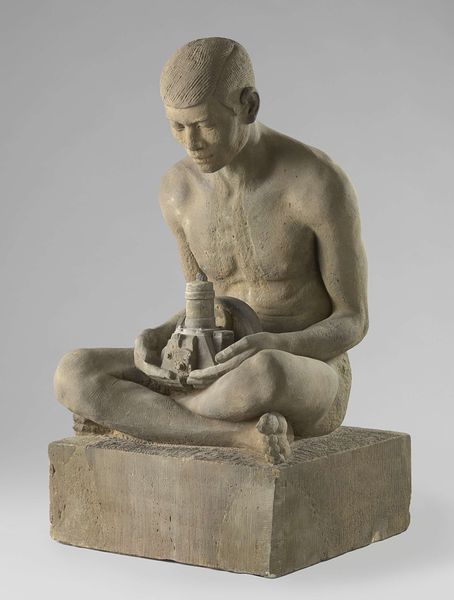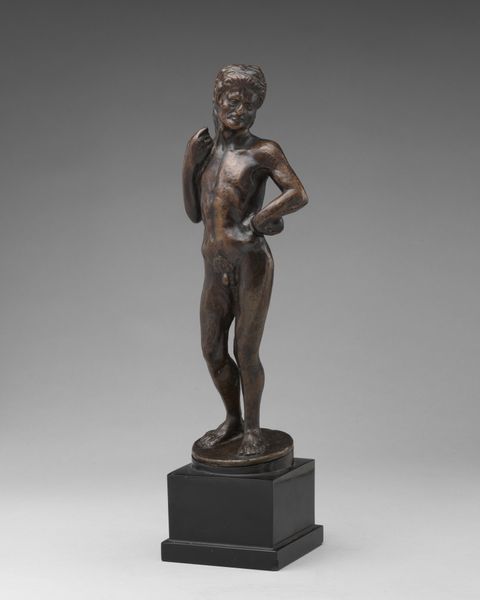
Dimensions: 84.5 x 33.3 cm
Copyright: Public Domain
Editor: Here we have Max Beckmann’s bronze sculpture, "Adam and Eve," created sometime between 1936 and 1979. It feels incredibly raw and unsettling. What do you see in this piece, especially regarding its creation and context? Curator: The roughness of the bronze casting is immediately striking. This wasn't about creating a smooth, idealized form, but revealing the artist's hand in shaping the material. Beckmann, working amidst the turmoil of the 20th century, likely chose bronze for its durability, almost a defiant act, suggesting resistance against destructive forces. Editor: So, the *how* becomes as important as the *what*. Does the date, straddling WWII, change your perspective? Curator: Absolutely. Think about the labor involved, the foundries perhaps repurposed for wartime production, the access to materials during scarcity. Bronze, traditionally associated with commemoration and power, is here used for a deeply human, flawed representation of the biblical couple. He’s physically present and seems almost… troubled. What of that smaller form being protected or revealed by Adam? Is it truly an Eve in formation or is there an additional message that only process can convey? Editor: It seems like the figure could represent all the heavy burdens weighing him down... Perhaps his concerns for the safety and purity of his soul? Is there almost an industry represented? It feels so human, vulnerable and un-heroic compared to classical portrayals. Curator: Precisely. This shifts the focus away from a purely symbolic reading and asks us to consider the social conditions, the sheer physicality of its making, and Beckmann’s own existential anxieties during a period of immense upheaval. Editor: I never considered the material speaking so loudly; it gives the work another interesting layer of significance to what I assumed at first. Curator: Understanding the means of production allows us to connect with the artwork on a more grounded, human level. It's a dialogue between artist, material, and context.
Comments
stadelmuseum about 2 years ago
⋮
From the mid-1930s, Beckmann worked intensely with sculptures and created eight figures in clay, which were then later cast in bronze. With “Adam and Eve”, Beckmann addresses one of his central motifs: the conflict between the sexes. Adam, bearing a resemblance to the artist, holds a tiny Eve in his hand. The serpent is an indicator of the imminent disaster – the expulsion from Paradise. Beckmann intentionally designed a rather ungainly Adam. As the National Socialists massively opposed the artist, he created a deliberate antithesis to their ideal body image.
Join the conversation
Join millions of artists and users on Artera today and experience the ultimate creative platform.
